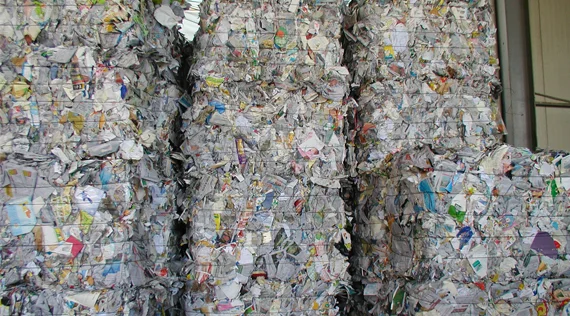
TORONTO (Scrap Monster): The new report released by the Canadian Plastics Industry Association (CPIA) suggests 3% jump in recycling rate of postconsumer plastic packaging in Canada during the year 2014, as compared with the year before that. The report titled ‘2014 Postconsumer Plastics Recycling in Canada’ was prepared by Moore recycling Associates for the CPIA. The report is based on the results of a survey carried out amongst more than 500 companies handling recycled plastics in North America.
In 2014, at least 320.7 million kilograms of postconsumer (including commercial) plastic material in Canada was collected for recycling. This represents a 3% increase over 2013. The increase was primarily attributed to increased collection of plastics packaging, especially plastic bags and film and HDPE bottles. The collection of postconsumer plastics for recycling by the country totaled nearly 320.7 million kilograms.
According to Carol Hochu, President and CEO of CPIA, 78% of the material reported was reclaimed in Canada or the US. However, the total volume of materials that stayed on-shore reported a sharp drop of 10.8 million kilograms. Only 17% was exported overseas. For almost 5% of the waste, export destination was unknown. The study finds that exported materials and those without a known destination surged higher by almost 20 million kilograms when matched with 2013.
U.S. companies purchased approximately 42.3 million kilograms (13%) of postconsumer plastic from Canada for processing in the U.S., down 3% compared to 2013. The material purchased by U.S. reclaimers combined with the plastic exported overseas resulted in 96.4 million kilograms (30%) of postconsumer plastic leaving the country. Canadian reclaimers purchased 209 million kilograms of Canadian-sourced recycled plastic and 78 million kilograms of U.S.-sourced plastic in 2014, down 4 million kilograms.
All major recycled plastic categories—Bottles, Non-Bottle Rigid, Film and Foam—increased collection compared to 2013. The Film category represents most of the growth: a 7.8-millionkilogram increase; all other categories combined had an increase of 1.4 million kilograms. Plastic bottles continue to make up the majority of the recycled plastic.
PET bottle collection increased only slightly in 2014, and remains the highest volume plastic product segregated by resin. HDPE bottles are the second largest category segregated by resin, showing an increase of just over 2 million kilograms year over year.
During the year, non-bottle rigid plastic recycling increased slightly over 2013. No significant increases were reported in the bale categories for resin-separated or mixed rigid plastic. The 14% increase in film recycling in 2014 over 2013, is attributable to increased collection, primarily of curbside film. The majority of the foam reported was foam polystyrene (PS).
PET and HDPE make up the majority of postconsumer plastic recycled in Canada. With the same breakdown as 2014, the majority of the PET is from bottles (90%), and the remaining 10% is nonbottle rigid PET. For recycled HDPE, non-bottle rigid decreased while film and bottles increased by 3% and 1% respectively. In 2014 the HDPE category comprised of 69% bottles, 18% non-bottle rigid and 13% film. The third largest resin collected for recycling is LDPE, consisting primarily of film (99%). PP consists of 79% non-bottle rigid and 21% bottle material; trading a 2% increase in nonbottle rigid and a 2% decrease in bottle in 2014.
The Canadian Plastics Industry Association is the national voice of the plastics industry in Canada, representing the interests of processors, material suppliers, equipment manufacturers and brand owners across Canada since 1943.
| Copper Scrap View All | |
| Alternator | 0.32 (0.01) |
| #1 Copper Bare Bright | 3.77 (0.07) |
| Aluminum Scrap View All | |
| 356 Aluminum Wheels (Clean) | 0.73 (0.02) |
| 6061 Extrusions | 0.64 (0.02) |
| Steel Scrap View All | |
| #1 Bundle | 475.00 (0) |
| #1 Busheling | 495.00 (0) |
| Electronics Scrap View All | |